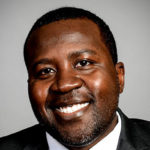This post summarizes recent activity at the Supreme Court in cases decided by the Federal Circuit.
- The Supreme Court received two new petitions this week in Michelson v. Department of the Army and Sanders v. United States.
- Mylan submitted its brief in opposition to the Court in Sanofi-Aventis Deutschland GMBH v. Mylan Pharmaceuticals Inc..
- Finally, one waiver of right to respond was filed with the Court in Martin v. Department of Homeland Security by the Department of Homeland Security.
Here are the details.
Granted Cases
There is no new activity to report.
Petition Cases
New Petitions
The Supreme Court received two new petitions for writ of certiorari this week.
First, in Michelson v. Department of the Army, Michelson (pro se) asked the Court to consider the following two questions:
- “Whether the Federal Circuit erred by reviewing a Merit System Protection Board Administrative Judge’s decision that a medical note provided after the disciple was proposed on a substantial evidence instead of de novo standard and thus affirming the decision rather than remanding for consideration under the de novo standard.”
- “Whether the provision of administratively acceptable evidence of incapacitation after a decision is made on a charge of absence without leave precludes the Merit Systems Protection Board from sustaining the charge of absence without leave.”
Second, in Sanders v. United States, the petition lists the following under the question presented:
- “Respondent, by their own admissions, monetized Petitioner’s assets in the amount of $212,945 without jurisdiction and violated their own policies and procedures, Title 26 § 6212 and 6213 (a).”
- “Both the United States Court of Federal Claims and the United States Court of Appeals incorrectly adjudicated the case as tax refund suit and not a jurisdictional suit.”
New Responses
In Sanofi-Aventis Deutschland GMBH v. Mylan Pharmaceuticals Inc., Mylan submitted its brief in opposition to Sanofi’s petition for certiorari. And in response to Sanofi’s first question presented, Mylan contends that, contrary to Sanofi’s belief,
the court below did not state any rule on th[e] issue [regarding raising nonjurisdictional Appointments Clause challenges], let alone bar parties from taking advantage of intervening court decisions where appropriate. Rather, it reached the unexceptional, fact-bound conclusion that Sanofi forfeited a nonjurisdictional challenge by failing to raise it at any point, before the PTAB or the Federal Circuit, until months after the argument below. And for many reasons, this case is an especially unattractive vehicle to address forfeiture law.
Mylan continues on to address Sanofi’s second question presented and argues that “Sanofi misrepresents what the Federal Circuit held.” Mylan explains that,
[a]ccording to Sanofi, that court held its patent claims obvious even though the invention did not solve a known problem. [] In reality, the court affirmed the PTAB’s finding that a problem known in the field generally is sufficient for obviousness, rejecting Sanofi’s view that a skilled artisan must know the precise problem that the inventors addressed. [] That is, the claimed invention here . . . simply applied a known solution to a known insulin problem.
Lastly, Mylan addresses the equities that warrant denying the petition for Supreme Court review. Mylan argues the following points:
while insulin glargine was a great invention, Sanofi’s obvious reformulation of it was not. For too long, Sanofi has reaped the benefit of market exclusivity at the expense of not only its competitors, but also patients forced to travel abroad or ration their medicine, at risk to their lives. For these reasons too, certiorari should be denied.
Waivers of Right to Respond
Additionally, the Supreme Court received one waiver of right to respond from the Department of Homeland Security in Martin v. Department of Homeland Security.

